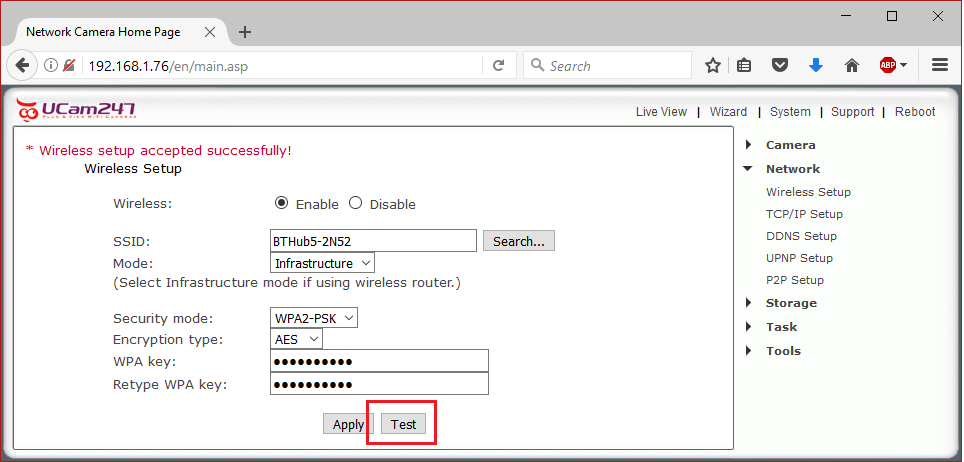


Second, we also include links to advertisers’ offers in some of our articles these “affiliate links” may generate income for our site when you click on them. This site does not include all companies or products available within the market. The compensation we receive for those placements affects how and where advertisers’ offers appear on the site. First, we provide paid placements to advertisers to present their offers. This compensation comes from two main sources.
Wifi connection test for free#
To help support our reporting work, and to continue our ability to provide this content for free to our readers, we receive compensation from the companies that advertise on the Forbes Home site. If you have any questions, then just drop a comment below.The Forbes Home editorial team is independent and objective. Read more about setting up your PowerShell Profile in this article. This way you can simply type “nettest” instead of Test-NetConnection. # Create an alias "nettest" or maybe just "tn" You can solve that by creating an Alias in your PowerShell profile or use the built-in alias tnc. At the beginning of the article, I mentioned that ping is shorter to type. if (Test-Connection -TargetName srv-lab02 -Quiet) Wrapping UpĪs you have seen is the PowerShell Test-NetConnection is a really powerful and useful cmdlet to use in your daily work. Test-Connect will return $true if any of the 4 pings are successful. This allows you to check if a computer is available before connecting to it. PowerShell Test Connection to ServerĪnother useful feature of PowerShell Test-Connection is that it can return $true or $false. So you can type: tnc 8.8.8.8 to ping Google for example. You can also type tnc instead of Test-Connecting. Test-Connection -Source srv-lab02 -ComputerName 8.8.8.8

The only requirement is that your account has access to the remote computer. We can also test the network connection in PowerShell of a remote computer with Test-Connection. Or specify parameters like the number of hops, buffer size or even add a delay between the pings: Test-Connection -ComputerName 8.8.8.8 -Count 3 -Delay 2 -MaxHops 255 -BufferSize 256 Testing a remote computer For example, we can test multiple destinations with one command: Test-Connection -ComputerName 8.8.8.8, 1.1.1.1 Source Destination IPV4Address Bytes Time(ms)īut we can of course a lot more. In the simplest form, you can type Test-Connection or to do a quick connectivity test. Just like ping, uses Test-Connection also the ICMP protocol to test the network connectivity of a network device.
Wifi connection test how to#
PowerShell Test-Connectionīefore we take a look at how to use the Test-NetConnection cmdlet in PowerShell lets first take a quick look at Test-Connection. Test-NetConnection is a lot more powerful and should be your go-to tool when it comes to troubleshooting network problems. The latter was the first step in replacing the ping command, with some advantages. Test-NetConnection is the successor of the PowerShell Test-Connection cmdlet. Most of the time we need to combine the ping command with tracert and nslookup to get all the details we need. It doesn’t do any tracing or port testing. The advantage of ping is that it’s a really short command to type, but the downside it’s that it only tests networking connecting over ICMP. So it’s now time to replace the ping command with PowerShell Test-NetConnection. Did you know that the ping command, with its 38 years, is older than the command prompt? You probably already have replaced the command prompt from your daily toolset with PowerShell.


 0 kommentar(er)
0 kommentar(er)
